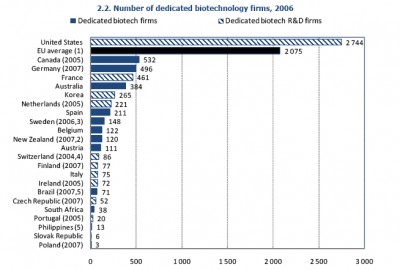
Notes from North of 49ºN
It’s not often I agree with Tom Friedman, but last fall when I was preoccupied with the US general election, teaching, and associate directing a center, he was advocating not just a bailout, but a green buildup. He quoted Van Jones, author of The Green Collar Economy::
“It’s time to stop borrowing and start building. America’s No. 1 resource is not oil or mortgages. Our No. 1 resource is our people. Let’s put people back to work — retrofitting and repowering America. … You can’t base a national economy on credit cards. But you can base it on solar panels, wind turbines, smart biofuels and a massive program to weatherize every building and home in America.”
Friedman was in favour of attaching green strings to bailouts, an idea I think warranted further study, at the very least. Fast forward 9 months and focus on the province of Ontario, where at the federal level, the Conservatives {Stephen Harper}, and at the provincial level, the Liberals {Dalton McGuinty}, jumped on the US bailout bandwagon to a tune of $9.5B or $10.9B Canadian. This is in addition to the Obama administration’s $49.8B. The combined US and Canadian bailouts are worth 130 times the present value of GM. Here’s what both Harper and McGuinty had to say about this::
“We had to save it all or have zero forever,”
–Stephen Harper, Prime Minister of Canada
“The alternative would have been a devastating blow to Ontario families and communities.”
–Dalton McGuinty, Ontario Premiere
The troubles in the industry are not new news and CBC has a chronology of layoffs. I’ve alluded to this bailout before and the scant jobs it will save, but here are the specifics in terms of the Canadian GM assembly line::
“At present GM Canada has 12,000 hourly and salaried employees, but that number is expected to shrink to about 5,500 over the next couple of years. About 1,100 of the new total is expected to be salaried jobs, which are unrelated to assembly operations. That means Ottawa and the Ontario government are together spending an unprecedented $2.1 million for each assembly job at GM Canada they hope to save.”–Time, 1 June 2009
It’s likely that GM suppliers will also be affected, a $7.2B industry employing 45,000 workers, but it is unlikely that all these jobs are at risk. While Canada accounts for about 19.4% of North American production, Canadian cost advantages have been eroded by a stronger Canadian dollar, a weakened US union in the UAW, and strong and strategic bargaining by the Canadian Auto Workers union.
While the situation looks gloomy for manufacturing in Ontario, quite a few are banking on green jobs. So much so that St. Clair College has a 2-year green jobs programme and the province has a commitment to clean energy. Currently, the province gets 25% of its electricity from coal, but wants to shut down all of its coal plants by 2014. The province is hoping to convert some of the plants to carbon-neutral biomass, although the yields will be lower. The slack will need to be picked up by alternatives, with greener options being wind and solar. Ontario’s Climate Change Action Plan calls for greenhouse gas emission reduction to 6% under 1990 levels and the new Green Energy Act is meant to protect the environment, regulate, and spur investment in green technologies.
Policy & Innovation:: The California Example
The PPIC has a report on the effects of California’s Zero-Emissions Vehicle {ZEV} mandate, particularly in the 1990s and early 2000s. During this time, the California government, through the Air Resources Board {CARB} initially set in 1990 requirements that by 1998 that 2% and by 2003 that 10% vehicles sold in California would be ZEV. Suffice it to say, concessions were made over time, but the original mandate set the wheels in motion for innovation. The effects of the program were::
- The policy spurred patents in near-term technologies
- CARB arguably responded to technological changes when revising the program
- Technological spillovers resulted in a greater number of indirect innovations
- Increased market development for emerging technologies
- Broadened design parameters
- Lower emissions in California
The program, albeit complex and not without politics and controversy, shows how policy can help to shape market-based activity in ways that would not occur otherwise.
Ontario:: Good Money After Bad
While not surprising, Canada and Ontario should have considered asserting themselves more, rather than caving to bailout pressure. Why not move forward to develop policies that help transition away from declining industries and in-line with over provincial objectives?, e.g., environmental and energy. How I see it is that the US and Canada are bailing out a company the capital markets have little faith in and now face the daunting task of rebuilding with a new CEO, “Big Ed,” who has a reputation for being an empire-builder. I question having an empire-builder in charge of a company needing to be leaner, a company needing to reinvent itself overnight. Let’s hope he indeed “learns something about cars,” and doesn’t make mistakes like this one, the old CEO Rick Wagoner copped to:: “axing the EV1 electric-car program and not putting the right resources into hybrids. It didn’t affect profitability, but it did affect image.”
While there have been debates on whether or not the US needs an auto industry {NY Times} and criticisms abound, such as this one on how GM betrayed our trust, Canada is nevertheless a 12% equity shareholder. This creation of a capitalist-state joint venture opens up a huge can of worms, as which interests will prevail and how to balance autonomous management and control versus paternalism? I think the answers are in economic sociology, a topic for a future post.
Song:: “Canada” – Low
Video::
Twitterversion:: #Canada #bailout of #GMfail =more #fail ? Can #Ontario still dvel #greeneconomy & innov.w/enviro&energy policy objctves? http://url.ie/1wdt @Prof_K

